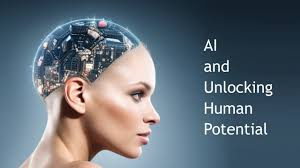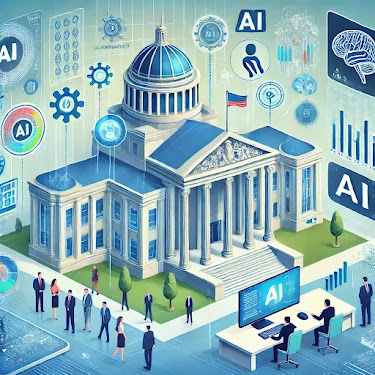Climate change remains one of the most pressing challenges of our time. As the world grapples with rising temperatures, melting ice caps, and increasingly severe weather events, the need for accurate climate models and effective mitigation strategies has never been more critical. Artificial Intelligence (AI) is emerging as a powerful tool in this battle, offering the potential to enhance the accuracy of climate models and develop strategies to combat the impact of climate change.
The Challenge of Climate Modeling
Climate models are complex simulations that predict future climate conditions based on various environmental factors. These models consider a range of variables, including greenhouse gas emissions, ocean currents, solar radiation, and cloud cover. Despite their sophistication, traditional climate models are limited by their reliance on historical data and the computational challenges of simulating the Earth’s climate system.
One of the main challenges in climate modeling is the sheer scale of data involved. The Earth’s climate is influenced by countless factors that interact in complex ways, making it difficult to predict future conditions accurately. Additionally, the models often struggle with uncertainty, particularly when it comes to predicting extreme weather events or long-term trends.
How AI is Enhancing Climate Models
AI, particularly machine learning (ML) algorithms, has the potential to transform climate modeling by analyzing vast amounts of data more efficiently and accurately than traditional methods. Here’s how AI is being used to improve climate models:
- Data Assimilation and Integration: AI can process and integrate large datasets from various sources, including satellite imagery, weather stations, and ocean buoys. By analyzing these data streams in real-time, AI can help create more accurate and up-to-date climate models.
- Pattern Recognition: Machine learning algorithms excel at identifying patterns in complex datasets. AI can detect subtle correlations and trends that might be missed by traditional models, leading to more accurate predictions of future climate conditions.
- Uncertainty Reduction: AI can help reduce uncertainty in climate models by using techniques like ensemble learning, where multiple models are combined to produce more reliable predictions. This approach allows scientists to better account for the range of possible outcomes and provide more accurate forecasts.
- Computational Efficiency: AI-driven models can run simulations more quickly and efficiently, enabling researchers to explore a broader range of scenarios. This is particularly important in climate science, where running detailed simulations can be computationally expensive and time-consuming.
Developing Strategies to Combat Climate Change with AI
Beyond improving climate models, AI is also playing a crucial role in developing strategies to combat climate change. Here are some ways AI is being used to address this global challenge:
- Renewable Energy Optimization: AI is being used to optimize the generation and distribution of renewable energy sources like solar and wind power. By predicting energy demand and weather conditions, AI can help maximize the efficiency of renewable energy systems, reducing reliance on fossil fuels.
- Carbon Emission Reduction: AI can analyze industrial processes to identify opportunities for reducing carbon emissions. For example, AI-driven systems can optimize supply chains, improve energy efficiency in manufacturing, and suggest alternative materials with lower carbon footprints.
- Climate Adaptation Planning: AI can assist in planning and implementing climate adaptation strategies, such as optimizing urban infrastructure to withstand extreme weather events or developing early warning systems for natural disasters like hurricanes and floods.
- Precision Agriculture: AI is being used to develop precision agriculture techniques that reduce water usage, optimize fertilizer application, and improve crop yields. These practices not only help farmers adapt to changing climate conditions but also contribute to food security in a warming world.
The Road Ahead: Challenges and Opportunities
While AI offers significant promise in the fight against climate change, it is not without challenges. One of the main hurdles is ensuring that AI models are transparent and interpretable, so policymakers and scientists can understand and trust their predictions. Additionally, the deployment of AI in climate science requires substantial computational resources and collaboration across disciplines, from computer science to environmental science.
However, the potential benefits of AI in climate modeling and strategy development are immense. By improving the accuracy of climate models and enabling more effective responses to climate change, AI can play a crucial role in mitigating the impacts of global warming and safeguarding the future of our planet.
Integration of AI in recent developments
The integration of AI into climate science has seen several exciting developments in recent years, with researchers and organizations around the world leveraging AI to tackle the complexities of climate change. Here are some of the most notable recent advancements:
1. AI-Enhanced Earth System Models
In 2023, researchers at the National Center for Atmospheric Research (NCAR) introduced an AI-driven approach to improving Earth System Models (ESMs). By incorporating machine learning algorithms, they significantly enhanced the resolution of climate simulations, enabling more accurate predictions of localized climate phenomena such as extreme rainfall and heatwaves. These AI-enhanced models help scientists better understand regional climate impacts, which is crucial for effective adaptation strategies.
2. Climate Prediction with Deep Learning
A recent study published in Nature Communications showcased how deep learning techniques are being used to predict climate extremes. The research team developed a neural network model that can forecast the likelihood of extreme weather events, such as droughts and floods, several months in advance. This advancement is particularly important for agriculture, disaster preparedness, and water resource management.
3. Google's AI for Flood Forecasting
Google has been leveraging AI for flood forecasting, particularly in developing countries where flood risk is high, and resources for traditional modeling are limited. In 2022, Google’s AI-based flood forecasting system expanded to cover the entire Indian subcontinent, providing real-time alerts and predictions that have already helped millions of people prepare for and mitigate the impacts of flooding.
4. AI in Renewable Energy Forecasting
AI is increasingly being used to optimize renewable energy systems. A significant development came from IBM, which in 2023, launched an AI-powered platform that predicts energy output from solar and wind farms with greater accuracy. By using advanced weather modeling and machine learning, the platform helps grid operators and energy companies better manage supply and demand, reducing the need for fossil fuel-based backup power.
5. Microsoft’s AI for Sustainability Initiatives
Microsoft has been at the forefront of using AI to drive sustainability. In 2023, the company announced a series of AI-driven projects aimed at reducing carbon emissions and improving environmental monitoring. One notable initiative involves using AI to analyze satellite imagery and sensor data to track deforestation and land-use changes in real-time, providing critical insights for conservation efforts and carbon offset programs.
6. AI-Driven Climate Risk Assessment
Financial institutions are increasingly turning to AI to assess climate risks associated with investments. In 2023, BlackRock, the world’s largest asset manager, integrated AI-driven climate risk analytics into its investment strategies. This allows for more precise assessments of how climate change could impact the long-term value of assets, helping investors make more informed decisions that consider environmental sustainability.
7. AI-Powered Climate Adaptation in Agriculture
Agriculture is highly vulnerable to climate change, and AI is playing a pivotal role in helping farmers adapt. In 2023, a collaboration between the University of California, Berkeley, and various agricultural tech companies led to the development of an AI system that advises farmers on crop management based on real-time climate data. The system uses machine learning to optimize planting schedules, irrigation practices, and pest management, leading to improved crop yields and reduced environmental impact.
8. AI in Carbon Capture and Storage (CCS)
AI is also being used to enhance Carbon Capture and Storage (CCS) technologies, which are crucial for mitigating climate change by capturing carbon dioxide emissions from industrial processes. A recent development from a team of researchers at Stanford University involved using AI to optimize the process of injecting captured CO2 into underground storage sites. The AI model improves the efficiency and safety of CO2 storage, making CCS a more viable option for reducing atmospheric carbon levels.
9. AI-Powered Early Warning Systems for Wildfires
As wildfires become more frequent and severe due to climate change, AI is being used to improve early warning systems. In 2022, an AI model developed by researchers at the University of California, Los Angeles (UCLA) showed significant success in predicting wildfire outbreaks by analyzing weather conditions, vegetation data, and historical fire patterns. This AI-driven system is being implemented in several fire-prone regions to enhance preparedness and response efforts.










.jpg)

.jfif)
.jfif)

